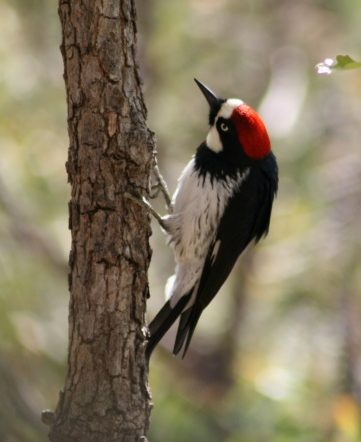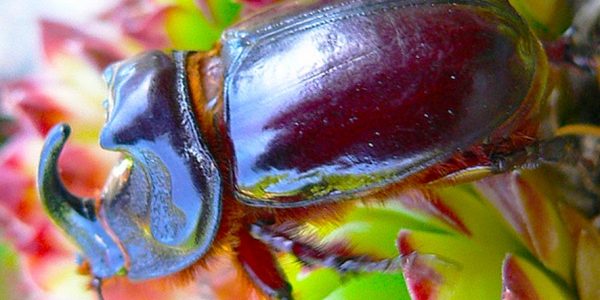Two Gonzaga biology professors have received National Science Foundation grants, an impressive achievement with wide-reaching effects on undergraduate students, who now will be able to contribute to important scientific research both in the lab and in the field. Professor Brook Swanson will study the rhinoceros beetle, while Associate Professor Joseph Haydock will investigate the behavior of the acorn woodpecker.
The NSF is an independent federal agency that funds research and education in science and engineering through grants. They receive approximately 40,000 proposals for funding every year.
The Rhinoceros Beetle in the Wild
Brook Swanson’s particular interest in the beetles of the subfamily Dynastinae is the giant horn that gives the insect its evocative common name. The origin of the horn, which the rhinoceros beetle uses to fight over females, is as yet unknown. Swanson and his students seek to unveil the answer to this mystery, with the long-term goal of understanding how and why animals evolve such impressive anatomical structures. “Really, it’s about evolution,” he says. “Our research could be more broadly applied to any organism with weird, exaggerated structures, such as the giraffe’s neck or the hammerhead shark’s head.”
Collaboration is key to Swanson’s project. He and his students are working with the University of Montana and Washington State University in Pullman to paint a broad and all-encompassing picture of the beetle’s development. “WSU is able to manipulate the genes responsible for growing horns, and UM has students that can run experiments in the field,” Swanson says. “For our part, Gonzaga is able to provide excellent undergraduate researchers, and our lab is able to examine the mechanics and material properties of the horns.”
The NSF grant will also pay for students to travel to Southeast Asia to study the beetles in their natural habitat. Possible destinations include Taiwan and the southern islands of Japan. Currently, Gonzaga retains several beetles for study in campus labs, but as Swanson explains,
“There are differences between a wild beetle and one bred in captivity, so the field experience will be invaluable to understanding the horns.”
Because Swanson’s grant includes travel funds, he hopes to send multiple groups of students throughout Southeast Asia. “It will be a very cool experience for students, and it will really help them see how these beetles live in the wild,” Swanson says.
The Curious Cooperation of the Acorn Woodpecker
The grant awarded to Joseph Haydock funds research of the acorn woodpecker, a species indigenous along the western coast of the United States to northern Colombia. This woodpecker provides a fascinating example of cooperative breeding, whereby members of groups work together to raise offspring. Essentially, there are several closely related breeders
in each group, and in an effort to prevent incestuous reproduction, offspring of these breeders do not breed themselves, but rather help raise other offspring. Haydock and his team hope to learn how this altruistic behavior evolved.

Professor Haydock’s NSF grant will allow students to study the acorn woodpecker at Hastings Natural History Reservation in Monterey, California.
The NSF grant will provide funds for students to travel to the Hastings Natural History Reservation in Monterey, California in order to study the woodpeckers in the wild for several days. At the Hastings Reservation, researchers are able to observe the woodpeckers’ behavior using nanotags, which record the birds’ location.
Haydock explains, “My colleagues and I assist, but it’s mostly students doing the work.” Students take the blood gathered from the Hastings Reservation, extract the DNA, prepare samples for genotype analysis, and analyze the data.
The students are looking to map how the helper birds are related to the offspring. Haydock theorizes that the more closely related the helpers are to the offspring, the more likely they are to care for the young. “Some helpers help more than others, and we want to figure out why,” he explains.
The overarching goal for Haydock’s research is to discover the evolution of complex social organisms, which will inform wider research in the future.
Brook Swanson’s research, too, is built on the idea that experimentation and research will provide insight into biological genetics as a whole.
Equally important is the fact that Swanson and Haydock are allowing students to learn by experience, to travel to the source of information, and to have a hand in exciting new discoveries. They are crafting the researchers of the future.
For more information on undergraduate research at Gonzaga, visit
www.gonzaga.edu/undergradresearch
